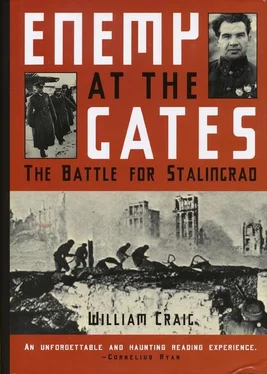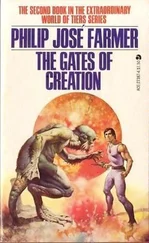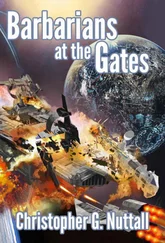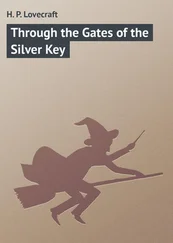SOVIET CIVILIANS
From B. V. Druzhinin (collection) Two Hundred Fiery Days; Genkina, Gerasimov, Grossman and Koroteev (works previously cited); Vodolagin’s Under the Walls of Stalingrad.
THE GERMAN SEVENTY-FIRST DIVISION
From interviews with Gunter von Below and Gerhard Meunch; also daily reports of the Seventy-first Infantry Division.
THE VOLGA CROSSING BY SOVIET REINFORCEMENTS FOR THE SIXTY-SECOND ARMY
From interviews with Tania Chernova, Pyotr Deriabin and Alexei Petrov. Also Chuikov’s The Battle for Stalingrad, Genkina’s Heroic Stalingrad; Gerasimov’s The Stalingradians; V. I. Grossman’s Stalingrad Hits Back; M. Ingor’s Siberians—The Heroes of Stalingrad; V. Koroteev’s Stalingrad Sketches and I Saw It; Samsonov’s Stalingrad Epopeya and The Stalingrad Battle.
ATTITUDE OF GERMAN SOLDIERS IN LATE SEPTEMBER
From interviews with Wilhelm Alter, Karl Binder, Friedrich Breining, Emil Metzger, Josef Metzler, Hans Oettl, Herbert Rentsch, Carl Rodenburg; also Paul Epple, Georg Frey, Karl Geist, Anton Kappler, Oskar Stange.
OPERATION URANUS TALKS
Zhukov’s memoirs previously cited. Vasilevsky’s “Unforgettable Days,” V.I.Z., 1965. Also Samsonov’s The Stalingrad Battle and Stalingrad Epopeya. Chapter Eleven
PAVLOV’S HOUSE
From I. F. Afanasyev’s House of The Soldier’s Fame, and his article in Krasnaya Zvedza, Feb. 2, 1963. Also I. Gummer and Y. Harin’s Heroes Chapter Notes / 427 of The Big Battle; V. Gurkin’s “The Pavlov House,” no. 2, 1963. L. Savelyev’s “I Am From the House of Pavlov,” Sovetskaya Rossiya, Feb. 2, 1963. Also Ronald Seth’s Stalingrad: Point of Return.
SNIPING AND ZAITSEV’S DUEL WITH MAJOR KONINGS
From an interview with Tania Chernova. Also V. Zaitsev’s Notes of a Sniper and V. Yuriev’s The Great Victory of Stalingrad; V.1.Z., no. 8, 1966; Chuikov’s The Battle for Stalingrad.
GERMAN BUILDUP AND ATTACK ON FACTORY DISTRICT
From interviews with Wilhelm Alter, Eugen Baumann, Karl Binder, Franz Deifel, Heinz Giessel, Heinrich Klotz, Ottmar Kohler, Heinz Neist, Arthur Schmidt, and Rudolf Taufer. Also Sixth Army records, October 6–30 (see Documents).
SOVIET INTELLIGENCE OPERATIONS AND AIR STRENGTH
From Chuikov’s The Battle for Stalingrad; N. Denisov’s “On Airports Near the Volga,” Aviatska I. Kosmonavtika, no.. 1, 1968. I. Dynin’s “Smoky Sky,” Krasnaya Zvezda, Feb. 2, 1968; N. E. Lentchevsky’s Trial by Fire; A. Vladimirov’s “Air Force in the Battle of Stalingrad” in Vestnik Vozduzknoge Flota, May 1943.
RUSSIAN DEFENSE OF THE FACTORIES
From interviews with Alexander Akimov, Pyotr Deriabin, Hersch Gurewicz, Alexei Petrov, and Pyotr Zabavkiksh. Also Boris Filimonov’s The Immortals; V. Gartchinko’s “Tempered in the Fire,” Krasnaya Zvezda, Feb. 2, 1968; Genkina’s Heroic Stalingrad; Gerasimov’s The Stalingradians; A. Kolesnik’s The Great Battle on the Volga; I..Lyudnikov’s “Soldiers on the Barricades,” Ogonyok, no. 5, 1968; I. Paderin’s In the Main Direction; E. T. Siserov in The Fight for Stalingrad; I. Semin’s Stalingrad Tales.
FIGHTING AROUND THE BARRIKADY AND RED OCTOBER PLANT
From interviews with Ignacy Changar, Tania Chemova, Hersch Gurewicz, Heinz Neist, Alexei Petrov, Ernst Wohlfahrt and from diaries of Karl Binder and Wilhelm Kreiser. Also German Seventy-ninth Division History—The Way of the Seventy-ninth Infantry Division, 1939-1945, and a series of orders to German 305th Division regiments on seizing the factory district, plus K. S. Belov’s From the Volga to Prague; N. I. Biryukov’s Two Hundred Days in Battle; A. D. Kolesnik’s The Great Victory on the Volga; A. D. Stupov’s The Sixty-second Army in the Stalingrad Battles; and Samsonov’s The Stalingrad Battle and Stalingrad Epopeya.
RUSSIAN BUILDUP AND GERMAN REACTION
From interviews with Winrich Behr, Gregori Denisov, Hersch Gurewicz, Alexei Petrov, Emil Metzger, Arthur Schmidt, Wolf Pelikan; a statement by Karl Ostarhild (see Second Television Company, Wiesbaden, Germany, documentary film on twenty-fifth anniversary of Battle of Stalingrad); and a report by German Intelligence East, September—November, 1942. Also Reinhard Gehlen’s The Service and Goerlitz’s Paulus and Stalingrad. For statements by Batov, Kazakov, Lelyushenko, Popov, Rokossovsky, Telegin, Vasilevsky, Zheltov, Zhukov, etc., see Samsonov’s Stalingrad Epopeya and The Stalingrad Battle, as well as Freiherr von Richthofen’s diary.
HITLER’S SPEECH IN MUNICH
From Speer’s Inside the Third Reich. The author also visited the Lowenbraukeller and inspected the stage where Hitler accepted his cronies’ applause.
THE PIONEERS AND LYUDNIKOV
From interviews with Karl Binder, Wilhelm Giebeler, Josef Linden, Ernst Wohlfahrt; also Linden monograph, Eugen Rettenmaier’s diary and Herbert SeIle’s The Tragedy of Stalingrad; Lyudnikov’s “There Is A Cliff on The Volga” from Druzhinin’s Two Hundred Fiery Days; Lyudnikov’s article in Ogonyok, no. 5, Jan. 1968; S. Glukhovsky’s Lyudnikov’s Island.
SOVIET BUILDUP
The D papers (previously mentioned).
CONDITIONS IN THE STEPPE
From interviews with Friedrich Breining, Karl Binder, Ekkehart Brunnert, Karl Englehardt, Herbert Rentsch, Gottlieb Slotta; also Herbert Selle’s The Tragedy of Stalingrad.
SOVIET SOLDIERS LIFE BEHIND THE FRONT LINES
From interviews with Alexander Akimov, Ignacy Changar, Tania Chernova, Pyotr Deriabin, Hersch Gurewicz, and Alexei Petrov. Also Genkina’s Heroic Stalingrad and Gerasimov’s The Stalingradians; Grossman’s Stalingrad Hits Back.
STALIN—VOLSKY
From Vasilevsky and Zhukov in Stalingrad Epopeya. Also Zhukov’s own memoirs (previously mentioned), and V. T. Volsky’s story in V.I.Z., no. 10, 1965.
THE APPROACH TO ZERO HOUR
Interviews with Winrich Behr, Hermann Kastle, Wolf Pelikan, Alexei Petrov, and Abraham Spitkovsky. Also Werthen’s History of the Sixteenth Panzer Division.
RUSSIAN OFFENSIVE (November 19-27, Chapters Sixteen and Seventeen.)
From interviews with Wilhelm Altar, Winrich Behr, Karl Binder, Horst Caspari, Franz Deifel, Pyotr Deriabin, Gerhard Dietzel, Isabella Feige, Karl Geist, Heinz Giessel, Gerhard Hassler, Herman Kastle, Dionys Kaiser, Leah Kalei, Heinz Lieber, Josef Linden, Xaver Marx, Wolf Pelikan, Albert Hager, Wilhelm Plass, Carl Rodenburg, Arthur Schmidt, Abraham Spitkovsky, Eugen Steinhilber, Siegfried Wendt, and statements by Karl Ostarhild (television documentary mentioned previously). Also, Heinz Schroter’s Stalingrad; Herbert Selle’s The Tragedy of Stalingrad; German Motorized Twenty-ninth Division history; Gram’s The Fourteenth Panzer Division; Werthen’s History of the Sixteenth Panzer Division; and The 384th Infantry Division (privately published); and Alex Buchrier’s Combat Report of Second Battalion, Sixty-fourth Armored Infantry Regiment. Also, the War Diary of the Seventy-sixth Infantry Division and Karl Binder diary; Rumanian Army Records (see Documents for this period); plus Goerlitz’s Paulus and Stalingrad; Carell’s Hitler Moves East, and Philippi and Heim’s The Campaign Against Soviet Russia 1941–1945. Also, P. I. Batov’s In Campaigns and Battles; Michael Bragin’s “Stalingrad—Uranus, Saturn and Tanks,” Moscva, no. 2, 1968; M. Popov’s “South of Stalingrad,” V.I.Z., no. 2, 1961; Rokossovsky’s “Victory on The Volga,” V.I.Z., no. 2, 1968; A. Telegin’s “Between Volga and Don,” Voyenny Vestnik, no. 2, 1963; A. Zheltov’s “The Southwest Front of the Counterattack of Stalingrad,” V.I.Z., no. 11, 1967; P. Zhidkov’s “How the Ring Around the German Sixth Army Was Closed,” V.I.Z., no. 3, 1962; also A. P. Bachurin’s Front Memoirs; Chuikov’s The Battle for Stalingrad; Khrushchev’s memoir; Koroteev’s Stalingrad Miracle; K. Morozov’s The Regiments Fought Like Guards and The Fight for the Volga: and various participants’ recollections in Samsonov’s Stalingrad Epopeya; and Yeremenko and Zhukov books previously cited.
Читать дальше












